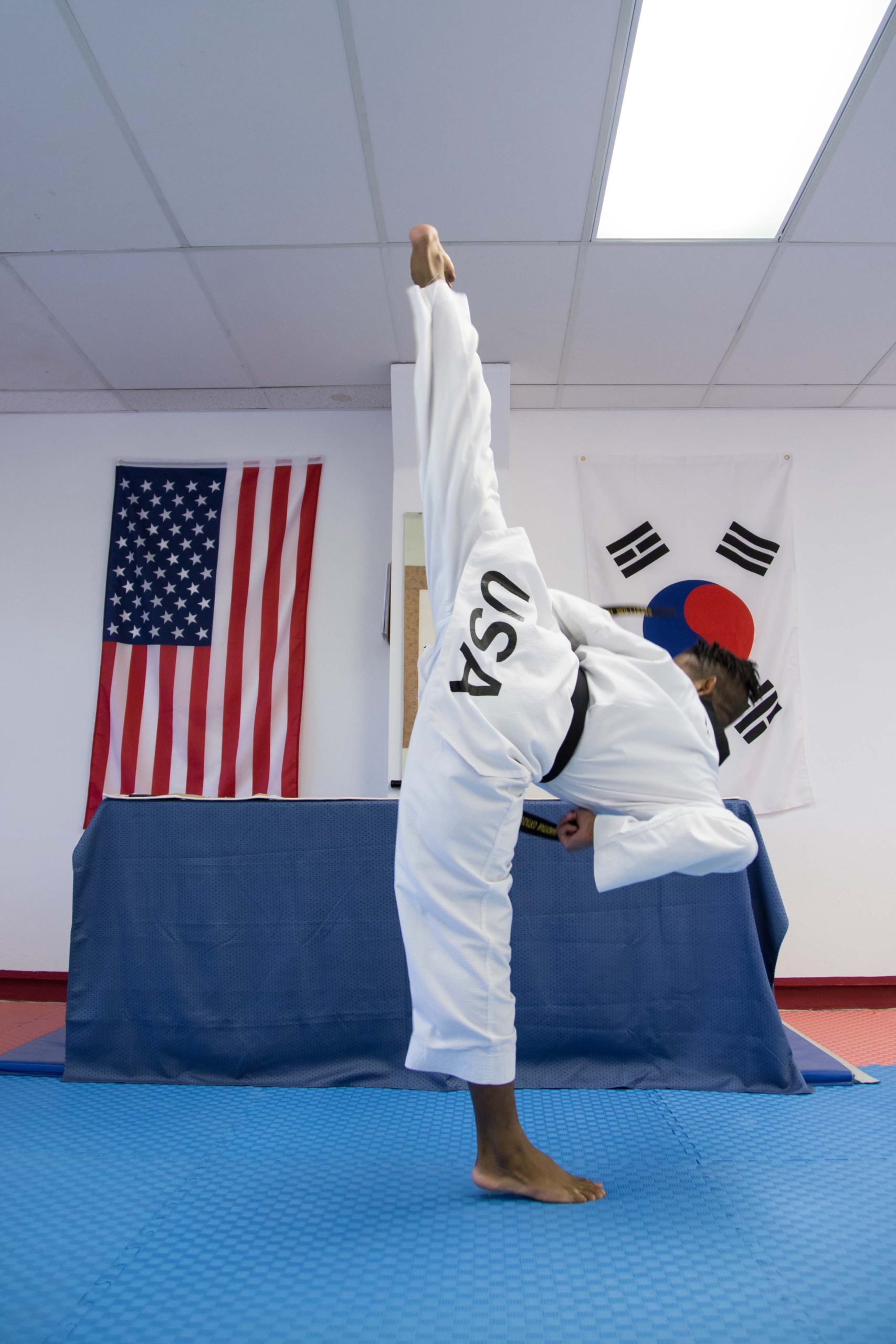
In the world of Taekwondo, high kicks are not only visually stunning but also essential techniques that showcase flexibility, balance, and control. Whether you’re a new student excited to learn the art of high kicks or seeking to improve your existing technique, proper stretching is a crucial step to achieve those impressive heights. In this guide, we’ll walk you through the importance of stretching and provide a step-by-step approach to help you stretch effectively for high kicks.
The Importance of Stretching for High Kicks
Stretching serves as a vital foundation for executing high kicks with precision and reduced risk of injury. Proper flexibility enhances your range of motion, allowing you to perform kicks at various heights while maintaining stability. Stretching also promotes muscle elongation and suppleness, reducing muscle tension and making high kicks smoother and more controlled.
Step-by-Step Guide to Proper Stretching
Follow these steps to prepare your body for high kicks and optimize your stretching routine:
1. Warm Up: Begin with a light cardiovascular warm-up to increase blood flow and elevate your body temperature. Jogging in place, jumping jacks, or dynamic movements like leg swings are effective ways to warm up your muscles.
2. Dynamic Stretching: Engage in dynamic stretches that mimic the movements you’ll perform during your Taekwondo session. Leg swings, knee lifts, and hip rotations gradually increase your range of motion and prepare your muscles for the static stretches to come.
3. Static Stretching: Static stretches involve holding a position for an extended period to target specific muscles. Focus on the muscle groups involved in high kicks, including the hamstrings, quadriceps, hip flexors, and groin.
- Hamstring Stretch: Sit on the floor with one leg extended straight and the other foot against the inner thigh. Lean forward, reaching for your toes while keeping your back straight. Hold the stretch for 20-30 seconds on each leg.
- Quadriceps Stretch: Stand on one leg and hold the opposite ankle behind you. Gently pull your ankle towards your glutes while maintaining an upright posture. Hold for 20-30 seconds on each leg.
- Hip Flexor Stretch: Kneel on one knee with the other foot forward. Tilt your pelvis forward while gently pressing your hips forward. You should feel a stretch in the front of the hip. Hold for 20-30 seconds on each side.
- Groin Stretch: Sit on the floor with the soles of your feet touching and your knees pointing outwards. Gently press down on your knees with your elbows to feel a stretch in the groin area. Hold for 20-30 seconds.
4. Proprioceptive Neuromuscular Facilitation (PNF) Stretching: PNF stretching involves alternating between stretching and contracting the targeted muscle group. For example, while doing a hamstring stretch, push against your hand or a partner’s resistance for a few seconds, then relax and deepen the stretch. Repeat 2-3 times.
5. Relax and Breathe: Throughout your stretching routine, maintain a steady and relaxed breathing pattern. Deep, controlled breaths help relax your muscles and enhance the effectiveness of your stretches.
6. Stretch Regularly: Consistency is key when it comes to improving flexibility. Incorporate stretching into your daily routine, even on non-training days, to gradually increase your flexibility over time.
Conclusion
Proper stretching is an essential component of mastering high kicks in Taekwondo. By warming up, engaging in dynamic and static stretches, incorporating PNF techniques, focusing on breathing, and making stretching a regular habit, you’ll enhance your flexibility and set the stage for impressive high kicks. Remember that progress takes time, so be patient and persistent in your stretching routine. As you work towards achieving higher kicks, you’ll not only improve your technique but also develop greater body awareness, control, and overall athleticism in your Taekwondo practice.
Written by ChatGPT & Reviewed by Clinical Psychologist & Head Coach: Yoendry Torres, Psy.D.